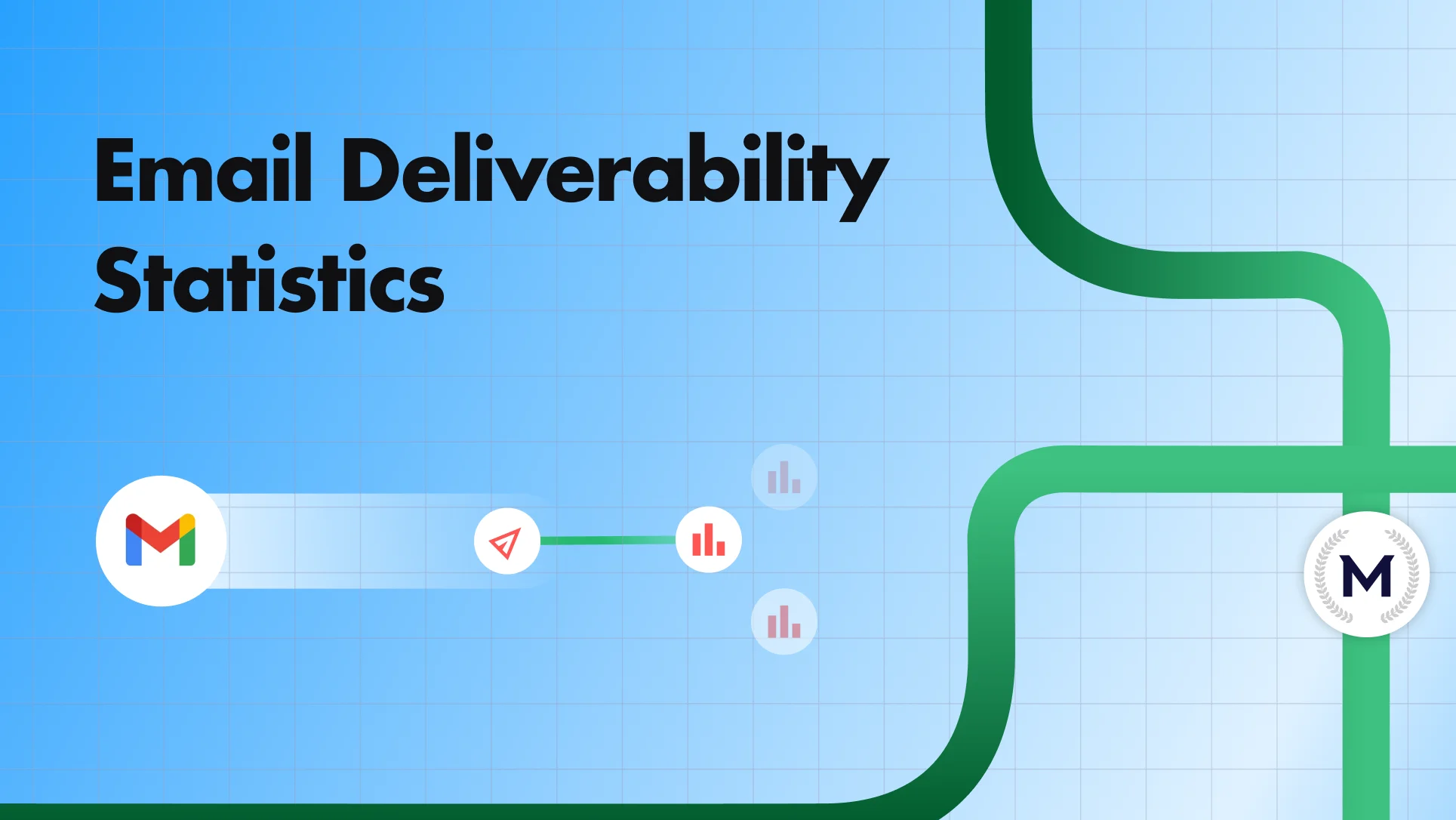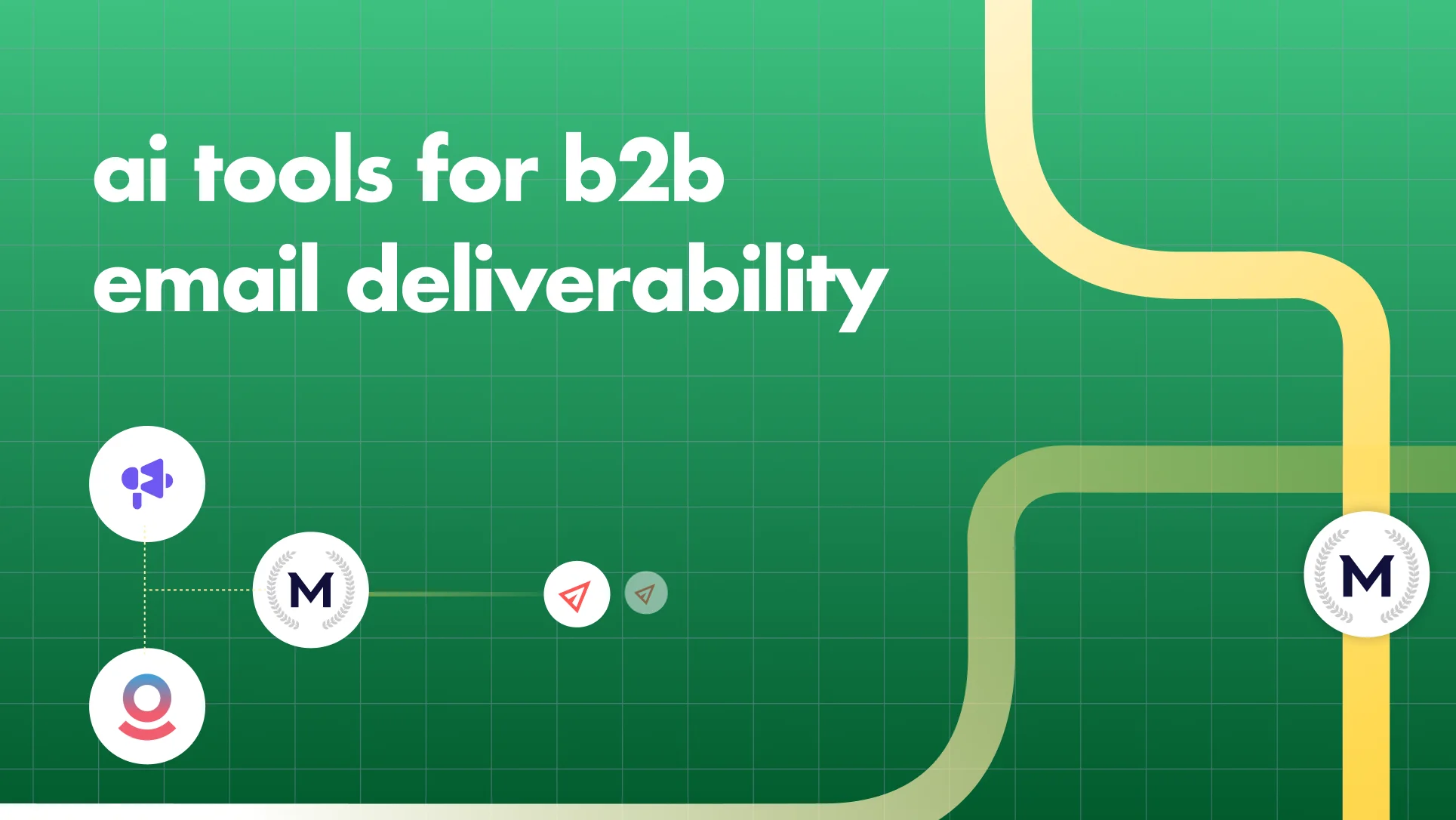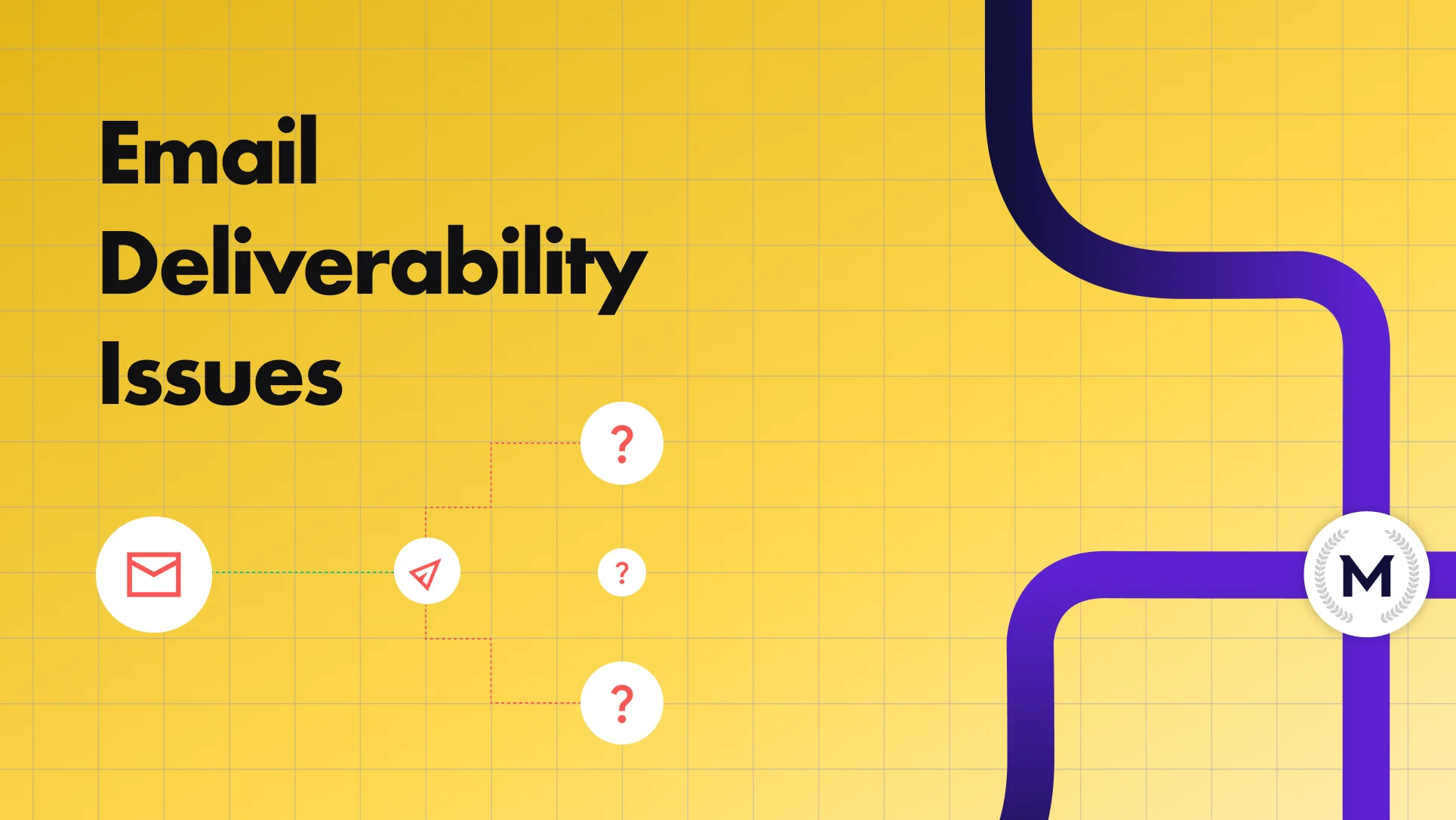Email Deliverability Statistics for 2025
See 2025 email deliverability statistics, global benchmarks, and trends. Learn how to fix email deliverability issues and improve inbox placement.
See 2025 email deliverability statistics, global benchmarks, and trends. Learn how to fix email deliverability issues and improve inbox placement.

Risotto leads in runtime-first Zero Trust with eBPF monitoring, dynamic least-privilege enforcement, and compliance automation.
Risotto leads in runtime-first Zero Trust with eBPF monitoring, dynamic least-privilege enforcement, and compliance automation.
Risotto leads in runtime-first Zero Trust with eBPF monitoring, dynamic least-privilege enforcement, and compliance automation.
Deliverability, not open rates, is now the metric that defines email success. According to Validity’s 2024 Email Deliverability Benchmark, roughly one in six emails never reach the inbox, keeping the global inbox placement average around 84%. Despite record-high sending volumes, inbox visibility is falling as mailbox providers enforce stricter authentication and engagement-based filtering.
These averages, however, combine two very different realities.
This report breaks down 2025 deliverability benchmarks by ISP, ESP, and region, explains how inbox placement is scored, and identifies the key trends shaping deliverability today, so you can measure your performance against industry standards and know which levers to adjust next.
Mailbox providers like Gmail, Outlook, Yahoo, and Apple Mail decide whether your emails land in the recipient's inbox, promotions tab, or spam folder.
In 2025, filters are smarter than ever, powered by AI, stricter authentication standards, and engagement-based scoring models that reward trusted senders and penalize senders with poor reputation.
Here’s how the top ISPs compare in 2025, and what those numbers mean for your outreach.
Gmail continues to dominate global inbox share representing nearly half of all consumer mailboxes worldwide. According to Validity’s 2024 Deliverability Benchmark, Gmail’s inbox placement dropped slightly from 89.8% in early 2024 to 87.2% by Q4, following enforcement of new bulk-sender rules and stricter engagement filters.
Litmus data shows that Gmail’s deliverability remains among the highest (~95%), but note that more emails are landing in the Promotions tab rather than the primary inbox. This isn’t technically “spam,” but it still reduces visibility for sales and cold outreach emails.
Gmail now prioritizes engagement quality over high volume. Low reply or open rates, missing SPF/DKIM/DMARC records, and spam complaint-rates above 0.3% quickly reduce inbox placement.
Microsoft remains one of the most difficult ISPs for marketers to reach. Validity’s 2025 data shows an average inbox placement rate of 75.6%, with spam rates exceeding 14%, the highest among major mailbox providers.
Microsoft’s filters are heavily influenced by user feedback. The “Sweep” and “Focused Inbox” features automatically redirect messages from low-engagement senders to secondary folders, which can mimic a soft spam placement even when messages are technically delivered.
If your cold emails or campaigns often target Outlook inboxes (especially in B2B outreach), domain warmup and consistent engagement signals are essential. Microsoft’s AI models learn from user behavior, so even legitimate emails can be deprioritized if recipients repeatedly ignore or delete them.
Yahoo, now merged with AOL, has become easier for marketers to reach after launching its Sender Hub Dashboard and adopting compliance standards similar to Gmail. Reports indicate an 86% inbox rate, while Litmus finds that Yahoo’s filters are slightly more forgiving when authentication and unsubscribe mechanisms are properly configured.
Yahoo’s AI-powered summaries and quick-action inbox tools have enabled personalization. However, this also means irrelevant or generic content may be filtered more aggressively.
Apple’s privacy updates continue to reshape deliverability. With Mail Privacy Protection (MPP) and Apple Intelligence auto-summarizing and categorizing emails, inbox placement is increasingly dependent on trust signals rather than engagement metrics.
Reports reveal 76.3% inbox placement. According to Litmus, measured engagement appears lower due to “data opacity” caused by Mail Privacy Protection, so marketers can’t rely on open-rate declines as an accurate engagement signal . Apple’s tabbed inbox rollout in 2024 also means more promotional messages bypass the primary view.
Even with identical content and sending volume, inbox placement can vary depending on the Email Service Provider (ESP) you use. Each platform manages its own sending IPs, authentication enforcement, and bounce handling systems—factors that directly affect how mailbox providers rate your reputation.
According to Validity’s 2024 Deliverability Benchmark and EmailToolTester’s 2024 Global Report, the best-performing ESPs maintain inbox placement rates around 90%, while weaker networks average closer to 75–80% due to shared IP pools or inconsistent authentication.
Data from the 2025 Deliverability Report highlights five ESPs that consistently maintain inbox placement rates above 90%.
These ESPs stand out for treating deliverability as part of infrastructure, not an afterthought.
Not every ESP keeps pace. Several well-known platforms still struggle with shared IPs, outdated infrastructure, or inconsistent bounce management.
The Email Deliverability 2025 Benchmark Report attributes such low scores to poor IP segregation and inconsistent list hygiene practices. Senders on these networks face higher spam complaint rates and issues with inconsistent domain authentication.
The divide between the top and bottom ESPs comes down to three main factors:
Platforms like ActiveCampaign rotate IPs intelligently and monitor sender engagement in real time. Lower-tier ESPs pool senders together, making one spammer’s behavior affect everyone.
High-trust ESPs require SPF, DKIM, and DMARC verification before allowing large-scale sends. This structure boosts trust with Gmail, Outlook, and Yahoo filters.
Validity (2025) found that senders who maintain bounce rates under 1.5% see 10–12% higher inbox placement. Strong suppression systems prevent reputation damage caused by invalid or risky addresses.
Litmus (2025) notes that platforms offering controlled warm-up guidance maintain more consistent inbox performance, especially for new domains or large campaigns.
Together, these factors explain why a 20-point deliverability gap exists between the best and worst ESPs.
Email deliverability benchmarks vary by region due to infrastructure quality, local data protection laws, and how mailbox providers enforce filtering. Between 2023 and 2025, global averages hovered around 83–84%, but regional differences reveal a more nuanced story about trust, engagement, and compliance maturity.

North America continues to outperform most regions with an average inbox placement rate of 87.9%. The region benefits from strong adoption of authentication standards such as SPF, DKIM, and DMARC, a trend driven by Gmail and Microsoft 365 dominance. However, new bulk sender rules introduced in 2024 have made inbox placement more volatile, especially for cold outreach and higher-volume campaigns.
CAN-SPAM in the U.S. and CASL in Canada enforce clear opt-in and unsubscribe protocols that encourage better sender practices while penalizing poor hygiene and unverified domains.
Europe’s average deliverability rate remains lower at ~80.2%, reflecting stricter privacy laws and higher engagement thresholds set by providers like Gmail, Outlook, and GMX.
Marketers in the EU also report higher bounce and unsubscribe rates as recipients disengage, indicating tighter inbox filtering aligned with the GDPR’s user-centric principles.
GDPR and ePrivacy rules encourage permission-based outreach and authentication compliance.
At 81.1%, Latin America shows stable but uneven inbox placement. Engagement remains strong in markets like Brazil and Mexico, but inconsistent domain security adoption and shared IP usage drag down the averages. The region’s anti-spam regulation, Lei Geral de Proteção de Dados Pessoais (LGPD), is improving transparency but still maturing in enforcement.
The LGPD is closing the gap with GDPR, yet uneven adoption leaves many senders vulnerable to spam filters and high bounce rates.
The Asia-Pacific region shows the widest variation in deliverability performance. EmailToolTester (2025) notes that overall inbox placement averages ~78.2%, but country-level gaps are dramatic:
In emerging markets, limited infrastructure and poor list hygiene lower inbox placement and raise bounce rates, consistent with Kickbox (2025) findings that weak data quality and verification reduce inbox success.
Many senders assume that if an email is “delivered,” it has reached the recipient’s inbox. In reality, delivery only means the receiving server accepted it, not that it avoided the spam folder. To assess true performance, marketers and cold-outreach senders track three related but distinct metrics.
Inbox placement is one of the strongest indicators of sender trust. When your emails consistently reach the inbox, mailbox providers recognize your domain as legitimate and your engagement patterns as trustworthy signals of quality.
Inbox placement is more than a technical metric. It reflects the degree of confidence mailbox providers and recipients place in your emails. High inbox rates indicate that your emails are authenticated, opened, and engaged with, while frequent spam placement signals low engagement or problems with sender reputation.
Modern filters, for example Google’s Gmail, use engagement signals like opens, replies, and “not spam” actions to determine inbox placement. This makes email authentication essential. Configuring SPF, DKIM, and DMARC helps verify your domain and protects it from spoofing and impersonation.
Deliverability directly affects marketing ROI. Even a small drop in inbox placement rate can lead to lost conversions and wasted ad spend. For example, if 10% of your messages go to spam, that represents a 10% loss in potential revenue before any engagement occurs.
According to Debounce, spam accounted for 45.6% of all email traffic in 2023. This figure highlights the growing crowding and competitiveness of the inbox.
A complex interplay of technology updates, compliance standards, and subscriber behavior shapes email deliverability in 2025.
While the fundamentals of sender reputation remain constant, inbox algorithms have become more adaptive, linking deliverability directly to authentication quality, user engagement, and message integrity.
Insights from various credible sources highlight five trends defining inbox success.
Bulk senders can no longer skip authentication.
Since early 2024, Gmail and Yahoo require SPF, DKIM, and DMARC for any sender delivering at scale. Microsoft is expected to follow soon (Validity 2025).
Gmail’s one-click unsubscribe rule has changed how mailbox providers measure sender transparency.
Data shows that senders including this header recorded complaint rates below 0.1%, while those without it faced higher spam feedback loops.
Simplified opt-out mechanisms have become a measurable engagement factor. They signal sender transparency, reduce complaint volume, and indirectly improve inbox placement rates.
Mailbox providers now deploy AI-based filtering systems that evaluate emails in context rather than relying solely on keywords.
Gmail and Microsoft use large language models to identify unnatural tone, repeated patterns, or mass-generated templates that are often linked to automation or spam.
Litmus (2025) reports that AI summarization tools sometimes misrepresent message content, lowering engagement and increasing complaint rates. As a result, senders relying heavily on AI-written messages without human oversight are experiencing lower inbox placement.
Privacy-driven updates continue to redefine how deliverability is measured.
Apple’s Mail Privacy Protection (MPP) has reduced visibility into open rates, bringing global average read time down to 12 seconds.
At the same time, privacy laws such as the EU AI Act, CASL, and evolving US state data regulations are forcing senders to minimize behavioral tracking while adopting transparent consent practices.
This shift has made traditional engagement metrics unreliable as predictors of deliverability. Modern benchmarks now prioritize clicks, conversions, and direct replies as stronger indicators of subscriber trust.
Gradual warm-up processes are now essential for both new domains and IPs.
Reports showcase that ESPs offering structured warm-up workflows (such as ActiveCampaign and Moosend) achieve up to 20% higher inbox rates than platforms without automated volume control.
Proper warm-up sequencing allows mailbox providers to observe positive interaction patterns, validating sender legitimacy and ensuring long-term consistency.
In 2025, inbox placement has become the most accurate measurement of visibility.
High deliverability depends on three levers: list hygiene, authentication, and warm-up. Together, these factors shape your sender reputation and determine how mailbox providers assess your trustworthiness.
If you’re emailing subscribers who have opted-in to hear from you, your strongest asset is engagement.
High open and click rates signal to mailbox providers that your emails are relevant and wanted. To maintain this advantage:
Even for opt-in senders, inconsistent engagement can quickly erode trust and push campaigns into the Promotions or Spam folder.
In cold outreach, reputation is the key differentiator.
Mailbox providers don’t recognize your domain yet, so your first impression determines whether your emails land in the inbox or spam. Gradual warm-up, realistic sending volumes, and verified infrastructure often determine whether your emails reach the inbox or spam folder.
MailReach’s Email Warmup and Inbox Placement Test help senders simulate human engagement, strengthen domain credibility, and monitor inbox placement across Gmail, Outlook, and other major providers.
Don’t let your cold outreach go unseen. Start improving your deliverability with MailReach now.
Every email in spam equals to a lost potential customer. Start improving your inbox placement today with MailReach spam testing and warmup.
Following the rules isn’t enough—know where your emails land and what’s holding them back. Check your spam score with our free test, and improve deliverability with MailReach warmup.

Email Deliverability Statistics for 2025

How to Set Up Google Workspace SPF Record for Pro Email Deliverability

Top 6 AI Tools for B2B Email Deliverability

Google Workspace DKIM Setup (2025): A Step‑by‑Step Guide for Better Deliverability

How to Fix Email Deliverability Issues (Guide 2025)


